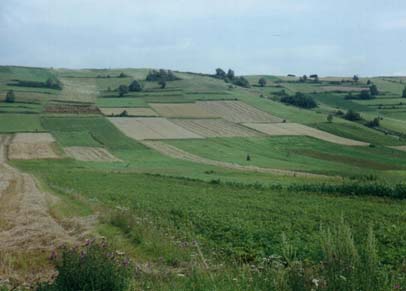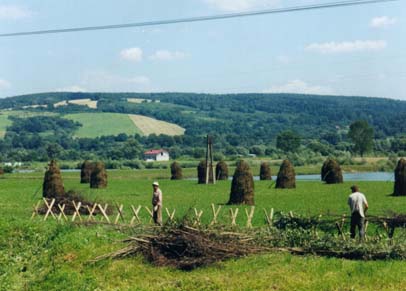| Return to main page |
It would be wrong to deny tensions between the traditional social anthropological perspective and the more 'culturalist' orientations popular today. We have come along together this morning, for this last lecture in our introductory week, in order to make some of the differences more explicit for you. We also wish, however, to show you areas of agreement, in other words to identify ground that all - or almost all - socio-cultural anthropologists have in common . . .
In the practicalities of fieldwork, we often come across a gender asymmetry. It is easy enough for a female researcher to gain virtually full access to the world of men. For example, most of my own fieldwork was carried out with male businessmen. However, it is often difficult for a male researcher to gain access to the world of women. I was able to do a lot of socialising with the female secretaries at my organisation in Warsaw, but the Professor would not have been able to accomplish this. His many learned articles about Central Asia contain almost no data about the lives of the women, for the simple reason that in those Muslim societies it is not possible for a man to study the female domain.

Figure 16: The Town Hall tower and the cloth hall

Figure 17: A beggar on St. Mary Magdalene's Square
The weather changed overnight and it rained non-stop all day Saturday. Ania and Tom continued their explorations of the city centre and had an argument about the rights and wrongs of giving money to a beggar in return for taking a close-up photograph. Then they spent hours over lunch in a popular café on the main market square, where they enjoyed Tako Mexicano. They discussed the globalisation of cuisine and then, without quite knowing how it came about, they found themselves arguing about problems of 'representation' and 'models'.
Ania emphasised the difficulties: 'How can social scientists ever be sure that they have properly grasped what other human beings think and believe?' she asked. 'And if these others belong to a different culture, how can the anthropologist adequately translate that understanding? For example, how can different styles of displaying emotion be expressed in dry academic prose?'
Tom conceded the difficulties but thought that the use of photographs
and film could alleviate them significantly. He was more interested in
pursuing the distinction between 'external models' and 'local models'.
'Of course these are not the same,' he said. 'But what I'd like to know
is whether anthropologists have managed to develop external models that
can explain why local models have the particular forms they have. I find
these problems of explanation more exciting than the problem of representing
one model in the language of another.

Figure 18 (i): A Galician patchwork of fields |

(ii): and haystacks |
The following day was sunny again and the trip to Zakopane was a success, though Ania would have preferred to be next to Tom on the bus, rather than Professor Dylag. It was good to be out of the city and the countryside here was somehow different: funny-shaped haystacks were dotted across tiny fields where, although it was Sunday, family members of all ages were active. Whatever the evolutionary processes that had given rise to this patchwork, it looked entirely incompatible with modern farming as it existed in their home countries. They ate well in Zakopane, visited a folklore museum, walked for a few hours, and spent the evening appreciating the noise and colour of Górale folk-dancing. Dr. Dylagowa whispered that such dancing was also popular among students in Cracow. However, these performers were apparently ordinary local peasants, preserving their traditions. Ania was not sure if she believed this and suspected that some of the songs and dances were actually rather new, reflecting modern urban tastes and styles. But then she asked herself if it really mattered. Whether or not the songs and dances were still handed down within families, whether or not the costumes were still entirely hand made, it was still a great performance, and one that the dancers and musicians themselves clearly enjoyed.

Figure 19: Górale in costume
| Return to main page |